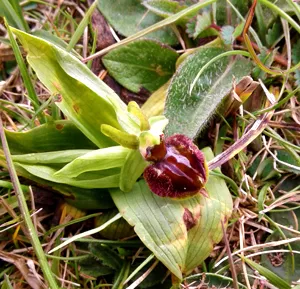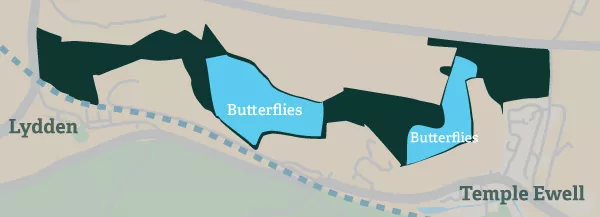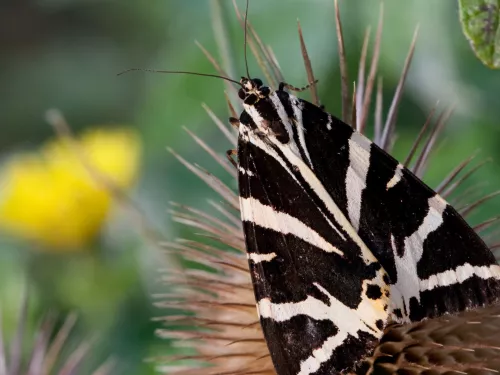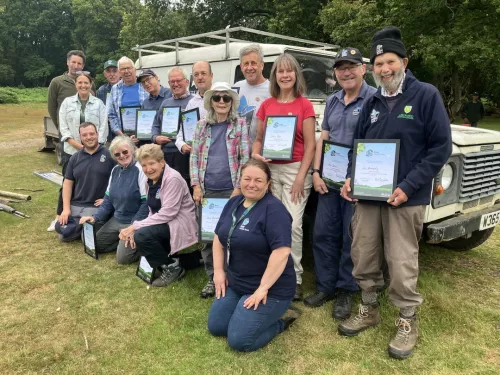
Meet the herd – the eight wild bison on a wilding journey in Canterbury
Since bison were released into West Blean and Thornden Woods on the outskirts of Canterbury, they have not only transformed the landscape but significantly grown in number.


Early spider orchid
Now, spring has properly sprung, there will be many plants and animals to look out for over the coming months. Butterflies such as brimstones, peacock and small tortoiseshells have already been spotted flying through the large areas of grassland and basking on the bare paths. Early spider orchids will be in abundance by now. These orchids are found on the shortly grazed turfs of chalk grassland and Lydden Temple Ewell supports a population in their hundreds.
One of the major animal groups that Lydden Temple Ewell supports are the colourful butterflies. In July and August, many species can be seen at the site, ranging from the green hairstreak to the rare silver-spotted skipper, along with the famous chalkhill and adonis blue butterflies , the latter which forms our logo. Over 20 species of butterflies have been counted on the reserve. Orthopteras are another feature that can be spotted (and heard!). As well as the wart-biter, the great green bush cricket is also found here, along with a number of other bush cricket species.

Lydden Temple Ewell butterfly map
You will also start to see iconic chalk grassland plants, providing the food to support the vast number of butterflies and other invertebrates. Chalk grassland has one of the most diverse plant communities found in the UK. The plants rely on grazing and are tough and hardy, surviving in ‘desert’-like conditions, From May to August, you will see many flowers growing, such as the devil’s-bit scabious or birds-foot trefoil.
Though not part of the wildlife, large numbers of cow are situated at the site between May and December. They play an important role in grazing the grassland, creating a whole range of microhabitats from the large grass tussocks to bare patches of chalk soil that a whole range of invertebrates rely on.
By Karen Weeks, Lydden Temple Ewell Reserve Warden
This year we have the chance to purchase crucial new land that will transform Lydden Temple Ewell Reserve for the future. We urgently need your support to raise £78,000 to buy an eight-acre extension; an essential part of the Lydden Temple Ewell Jigsaw.
A donation of £100 would help the Trust to buy 41 square metres of invaluable land.

Since bison were released into West Blean and Thornden Woods on the outskirts of Canterbury, they have not only transformed the landscape but significantly grown in number.

Margery Thomas, Hothfield Volunteer and regular columnist looks at the lack of butterfly sightings in recent months, the work volunteers are doing to remove bracken and how this all impact the wider management of the last remaining fragments of heathland…

By August, floral glory has passed from the orchids (heath spotted, southern marsh and a few large hybrids) to the heather or ling. As ever, we hope for a protracted display of purple in the heathy areas, which is likely if the cool nights persist. Orchid…